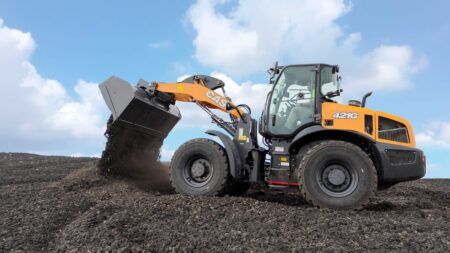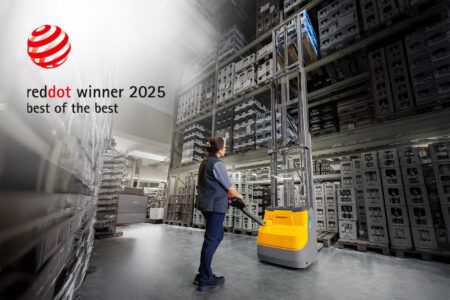A major draw at Bauma 2016 was the Genius Cab, created by the CAB Concept Cluster which was founded in 2014 and comprises 13 partners, including global players, innovative OEM suppliers, renowned scientific institutions, designers, industry associations, machinery hire companies and operators. They all have contributed their expertise and decades of experience to the development of the model cabin Genius CAB.
Cluster members include the companies Aurora, Bosch, Fritzmeier Systems, Grammer, Hella, HYDAC, MEKRA Lang, SAVVY Telematic Systems, SMA Metalltechnik, Lumod design agency, TU Dresden University of Technology, VDBUM Association, and Max Bögl.
Their joint objective is to illustrate the incredible potential of efficient systems integration to OEMs in the construction and agricultural industry as well as manufacturers of industrial forklift trucks.
The Genius CAB is a tangible vision of a groundbreaking wheel loader cabin based on knowledge networking, functional integration and a simultaneous process of development, featuring tomorrow’s trends and today’s customer requirements.
The exterior and interior of the Genius CAB were developed and implemented in the scope of a multi-manufacturer styling concept, resulting in a unique overall appearance inspired by a polished diamond. The concept received the innovation award “Bauma Innovationspreis 2016”.
Formative light lines that can be individually adjusted underline the unique branding.
“Human Centered Design” as a guiding theme ensures maximum ergonomic comfort in the workplace due to the interior’s large dimensions. The glass cockpit with faceted window surfaces provides excellent vision.
Reduction and simplification: this is reflected in the modular construction of the exterior with the integrated structure with a ‘softcab’ made up of special welded aluminum profiles that have led to a 30% reduction in weight and the fitting EXO-ROPS/FOPS which is additionally placed above the cabin and is suitable for weight categories ranging from 10t-50t.
The interior is equipped with a central touchscreen panel, which is integrated into the armrest of the adjustable seat along with the joystick. All functions and machine parameters that are controlled by the operator are centrally visible and adjustable even in adverse working conditions. An adaptive user interface collects the key parameters and ensures safe and expedient navigation.
Another novelty is the CAN network of all functions and components. A body computer constitutes the control center based on a complex, modular CAN matrix and processes all incoming and outgoing signals. Intelligent cloud technology registers operation and application times of operator and equipment, equipment status and records possible damages.
A mirror replacement system, combined with a variable rearview camera surveillance system and interior displays, greatly improves all-around visibility, especially in conditions of darkness. Ultrasonic sensors detect hazardous situations and obstacles in the vicinity. Individually controlled work lighting is used in excavation processes (dynamically) and without mobile lighting systems.
Air outlets together with the heating/air-conditioning system located on the side ensure outstanding climate control.
The filter system equipped with RFID chips is easily accessible and improves the quality of maintenance.
April 15, 2016




